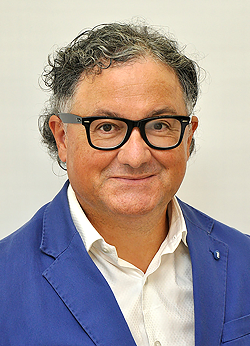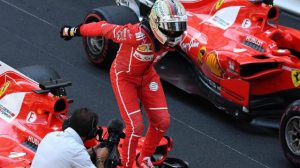A few hours ago Scuderia Ferrari has achieved a historic first and second place at the Monaco GP showing technological superiority compared to its competitors. The two read F1 in front of the podium looked like beautiful spaceships resting after a nice stroll around the twisty circuit. Last season Ferrari’s struggles appear to be ages ago and even the reigning F1 World Champion, Nico Rosberg, after the race was wondering how it has been possible for Ferrari not only to close the technological gap to Mercedes but also to surpass the competition.
A key reason for the turnaround
Motorsport’s magazine writer, Mark Hughes, has an answer to the question Nico just asked featured in the May Issue of the magazine. The title of the article is “The Scuderia fights back” and its goes to the very core to some fundamental organisational changes that Sergio Marchionne, Ferrari President wanted to set at mid season last year by letting go the top designer James Alison (next to begin to work for the Mercedes F1 Team).
Marchionne, after talking to several people at various level of the Scuderia about their straightforward perspective on the lack of results, has decided to take a new course with a fresh managerial and organisational philosophy that runs behind the scenes and that sets managerial innovation on the same level of effective technological innovation in order to achieve success.
No longer a ‘game of egos’
Traditional F1 has been a sport made of strong egos that use to lead teams driven by marked visions and decisiveness in their actions inspired and inspiring by showing strong leadership characteristics and at the same time a tightfisted managerial style quite stern and direct to push people to perform; Enzo Ferrari, Bernie Ecclestone, Ron Dennis, just to name a few of them among many. Marked hierarchies characterise companies run this way. Most of the decisions happen top-down and a culture ‘no errors allowed’ shapes-up as a direct consequence. They are able to achieve success by the vision and drive of their founders and top leaders but what happens when such visions become offset respect to increasing complexities of fast paced changed originating from several directions?
Marchionne himself has a management style quite direct and decisive, yet with the Scuderia, has realised that something different needed to be done. He has opened a new managerial course, a new philosophy in managing at best the overall know-how present within the organisation: maximising its utilisation, not simply letting the know-how of the few come-up with ideas and have the others executing them. Companies organised this way need a marked sense of direction, of overall vision (what is the overall project, the overall unique inspiring goal that gives a sense of meaning and inspiration to the entire organisation?) yet this is not the only characteristic that is essential.
Managerial innovation driving technological innovation
As Mark Hughes observes (by utilising several examples of original technological innovations featured in this season F1 Ferrari) they also need to clarify and put in practice what is the difference between ‘managing high performers’ and ‘managing high potentials’. Managing ‘high performers’ means to measure achievement only in terms of performance: what the company is able to reach or not reach. Managing ‘high potentials’ means to measure achievement not only by performance expressed, better yet by past, present and future learning curves: it is much more dynamic way to manage people and situations. Top performers that take control of the entire situations might not be the most suited one to drive effective performance within highly complex environments subject to continuos change. Knowledge and ideas need to be further widespread and utilised, help needs to be sought after all over the organisation: a company needs to become aware of untapped know-how of its people. Original ideas and solutions originate from this kind of flat hierarchies in which groups have much more room for shared decision making. People are stimulated to share their ideas freely with no fear to subject themselves to judgement for errors that might ensue. It is a matter of fact that through this process, no matter what, learning is stimulated concretely in individuals, groups and the overall organisation.
An empowering organisational culture
All of this generates a new organisational culture in which know-how needs to be fully identified inside the company and released in a methodical way in order to achieve the performance and goals set. Once again this need to be done not simply by utilising the ‘high performers’ perspective but also the dynamic one ‘high potentials’ because challenges and complexities keep on raising.
A call for Motorsport SME action
All of this represent a case study that exemplifies the way that we support Motorsport Small and Medium Sized Organisations to value and utilise at best all of the know-how they already have, leverage at best on their people, in order to leverage on it for growth on global markets. The way to proceed about this is:
- set a dynamic vision for the future suitable to inspire and give a sense of meaning to the people working at the organisation while communicating a sense of unique value added they can generate for their clients (even beyond the Motorsport field);
- recognise the talent of the people as from a dynamic ‘high potential’ perspective that goes well beyond the one simply measuring performance: there is a continuos methodical projection towards taking advantages of new opportunities leveraging at best on know-how;
- project all of this towards markets and contexts where such value adding potential is fully expressed and recognised.

